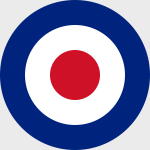Corgi US37603 RAF Westland Wessex HC.2 Helicopter - No.72 Squadron, Odiham, Hamphire, 1970 (1:72 Scale)
"Obsolete weapons do not deter."
- British Prime Minister Margaret Thatcher
 The Westland Wessex is a turbine-powered version of the Sikorsky S-58 "Choctaw", developed under license by Westland Aircraft, initially for the Royal Navy, but later for the Royal Air Force (RAF). The Wessex was built at Westland's factory at Yeovil in Somerset. The name Wessex had also been used for a fixed wing light transport of 1930, a modification of the Westland IV.
The Westland Wessex is a turbine-powered version of the Sikorsky S-58 "Choctaw", developed under license by Westland Aircraft, initially for the Royal Navy, but later for the Royal Air Force (RAF). The Wessex was built at Westland's factory at Yeovil in Somerset. The name Wessex had also been used for a fixed wing light transport of 1930, a modification of the Westland IV.
The first Wessex, a HAS.1 flew in 1958, and they entered anti-submarine duties in 1961 with the Royal Navy. Royal Navy's Fleet Air Arm anti-submarine examples (HAS Mk.1, HAS Mk.3) used the Napier Gazelle engine, a turboprop engine developed into a turboshaft. This made the Wessex the first helicopter to have a free-power turbine, where the power shaft is not physically connected to the compressor shaft.
The design was adapted in the early 1960s for the RAF, and later Royal Marines, to become a general-purpose helicopter capable of troop-carrying, air ambulance and ground support roles. In contrast with the HAS.1, it used twin Bristol Siddeley Gnome engines (not a free-power turbine). These marks (HC Mk.2, HCC Mk.4, HU Mk.5) had a single large exhaust on each side of the nose, the Gazelle-powered examples having a pair of smaller exhausts on either side.
Pictured here is a 1:72 scale replica of a RAF Westland Wessex HC.2 helicopter assigned to No.72 Squadron, Odiham, Hampshire, during 1970.
Sold Out!
Dimensions:
Rotor Span: 9-inches
Release Date: January 2008









